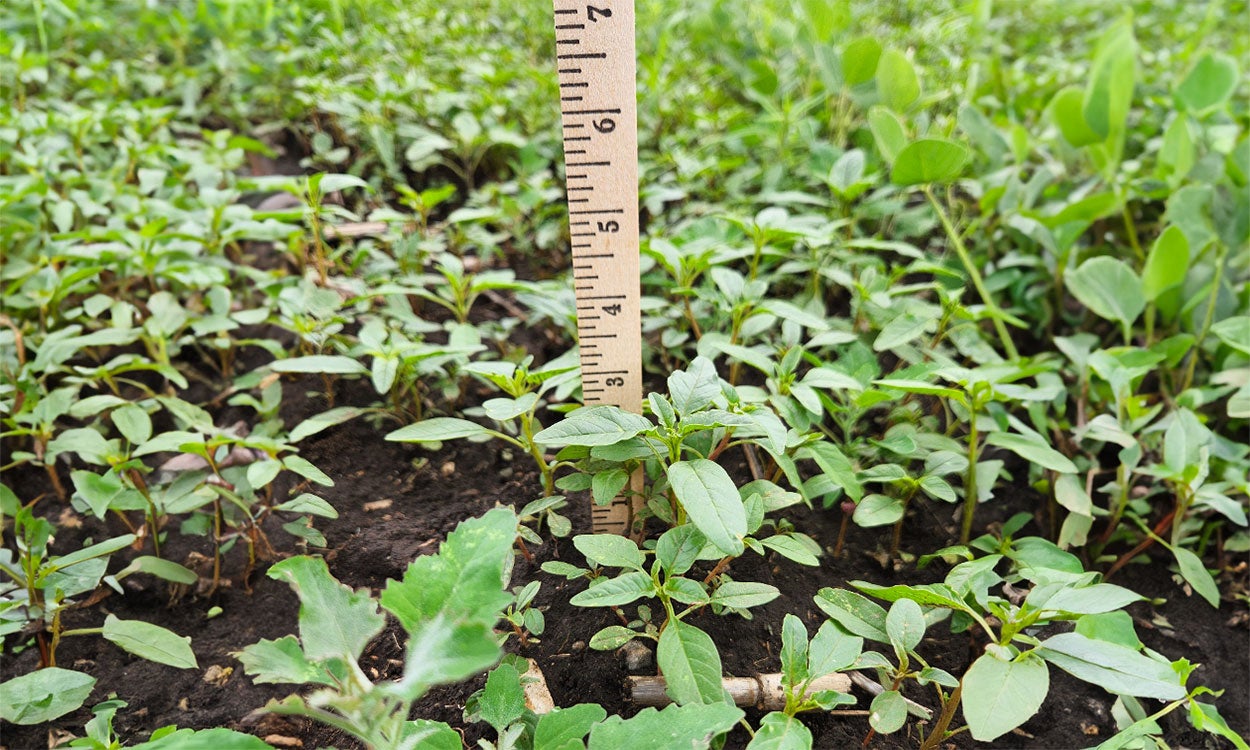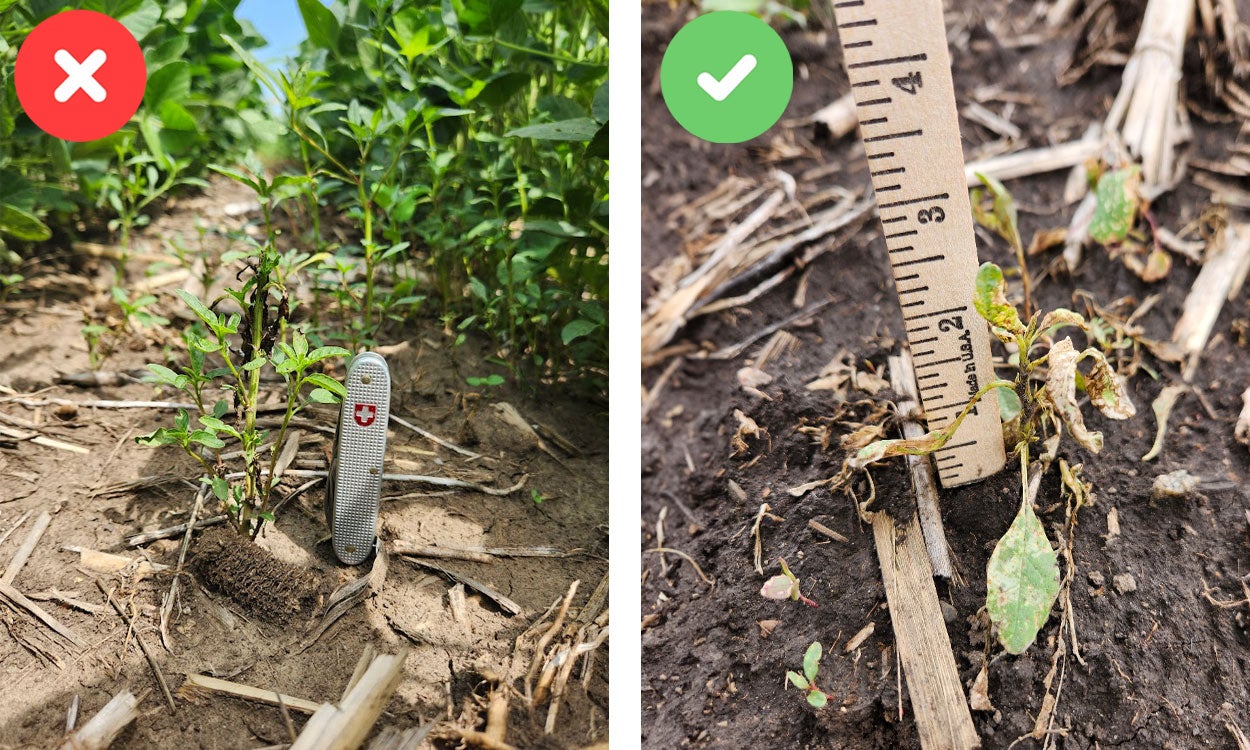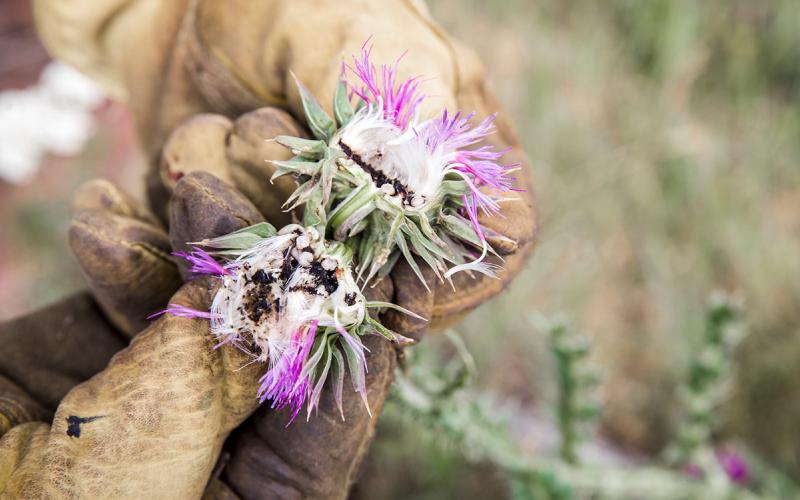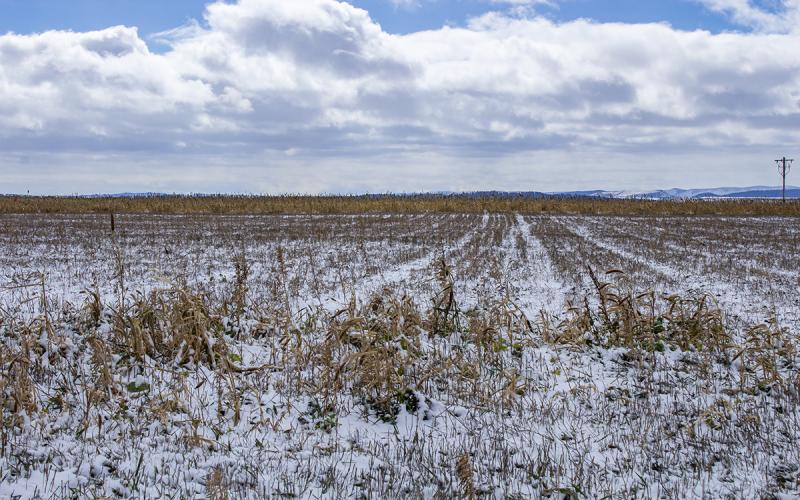Written collaboratively by Eric Jones, Philip Rozeboom, Jill Alms, and David Vos.
Soybean planting was delayed across South Dakota for the 2024 growing season due to wet conditions. Even once planted, the wet conditions have continued. While rainfall is needed to activate the preemergence herbicides that are applied, too much rain can wash the herbicide through the soil profile. If the preemergence herbicide was activated with proper rainfall (0.5 to 1 inches), the continuous rainfall and recent warm conditions can induce later germination of weed seeds. Adequate moisture and recent warm temperatures will also result in weeds growing faster. Postemergence herbicides should be applied to smaller weeds (2 to 4 inches in height), but proper scouting is likely necessary.
Target Weed Height
Small weeds are less difficult to manage with herbicides, especially with herbicides that require coverage to be effective. Weed heights should be measured rather than assumed, as 2-to-4-inch weeds can be difficult to see (Figure 1). However, misjudging weed size (>6 inches) results in an herbicide application that is ineffective compared to a timely application (Figure 2). The herbicide can be applied to the target weed height and be effective, but you should also consider the weather conditions for this growing season: wet with warm temperatures. If the wet conditions and warm temperatures continue, a sequential herbicide application may be needed to manage the later emerging weeds.


Herbicide Selection
Sequential herbicide applications will be viable and effective, but if the rain continues, will you be able to get back into the field to make a timely spray? Consider adding an herbicide with soil residual activity in the initial postemergence herbicide application. Hopefully, the additional herbicide will help control the later-emerging weeds, so another sprayer trip across the fields will not be necessary. Consult the latest South Dakota Pest Management Guide: Soybean for herbicide selections, rates, and application restrictions.
When scouting for the target weed height (again, 2 to 4 inches), make a note of what weeds are present in each field. Likely, it will be too late to change herbicides that will be applied, but not all herbicides applied postemergence in soybean will control every weed. For example, fomesafen (Flexstar) (PPO inhibitor; Group 14) will not effectively control common lambsquarters. Therefore, another herbicide should be added to the tank, or a completely different herbicide should be applied to the field to control the species present. Additionally, knowing what species are present in various fields can help select the appropriate preemergence herbicide for the following growing season as well. Again, refer to the latest South Dakota Pest Management Guide: Soybean for herbicide selections, rates, and application restrictions. Crop rotation can also facilitate managing select weeds, as different herbicides and non-chemical tactics can be used in different crops.
Continue to monitor fields after the postemergence herbicide application. Control failures should be diagnosed to determine if the correct herbicide or rate was applied to manage the weed species. If the area is small and isolated, weeds can be hand weeded, mowed, or spot sprayed. If resistance is suspected, contact SDSU Extension so the weed can be further tested to confirm resistance. However, weeds that are a result of a control failure should be eradicated to cease seed production, as the offspring could carry the herbicide resistance traits. If no control failures are evident, still monitor fields to determine if there are later-emerging weeds that need to be treated or perhaps harvested last to not move weed seed around fields.


